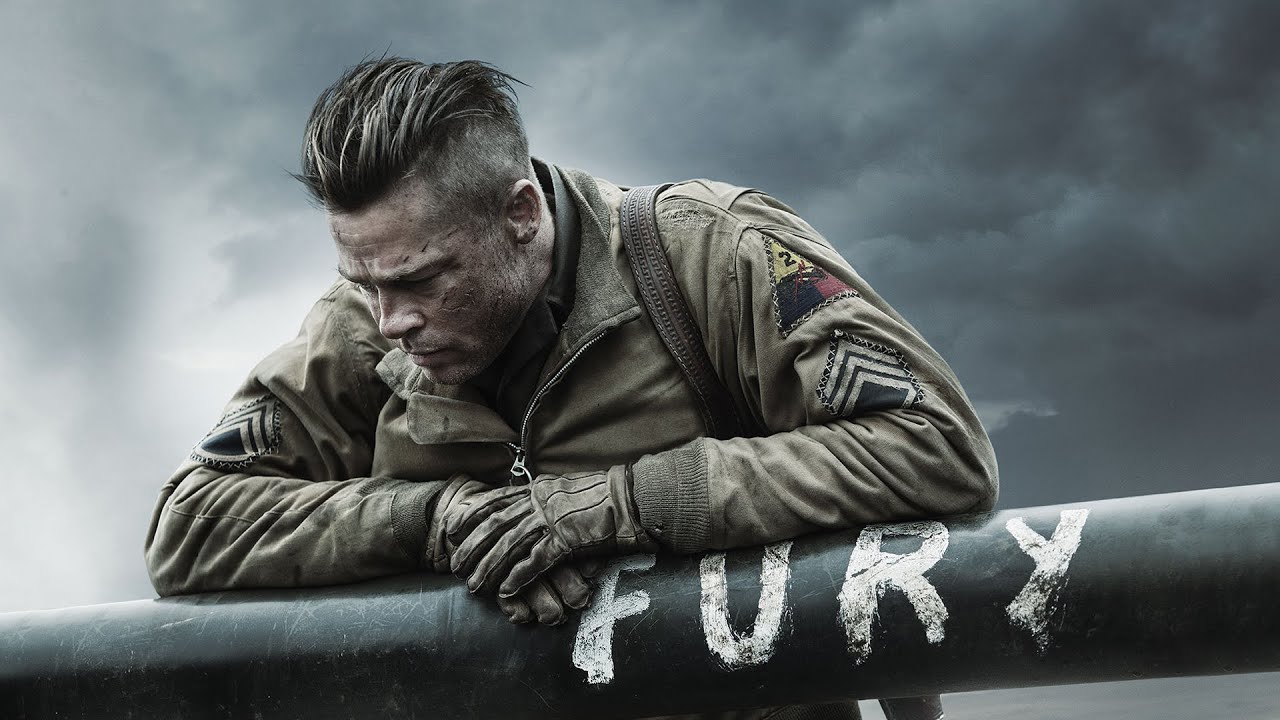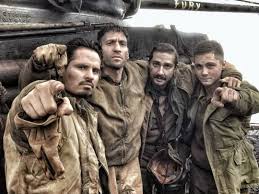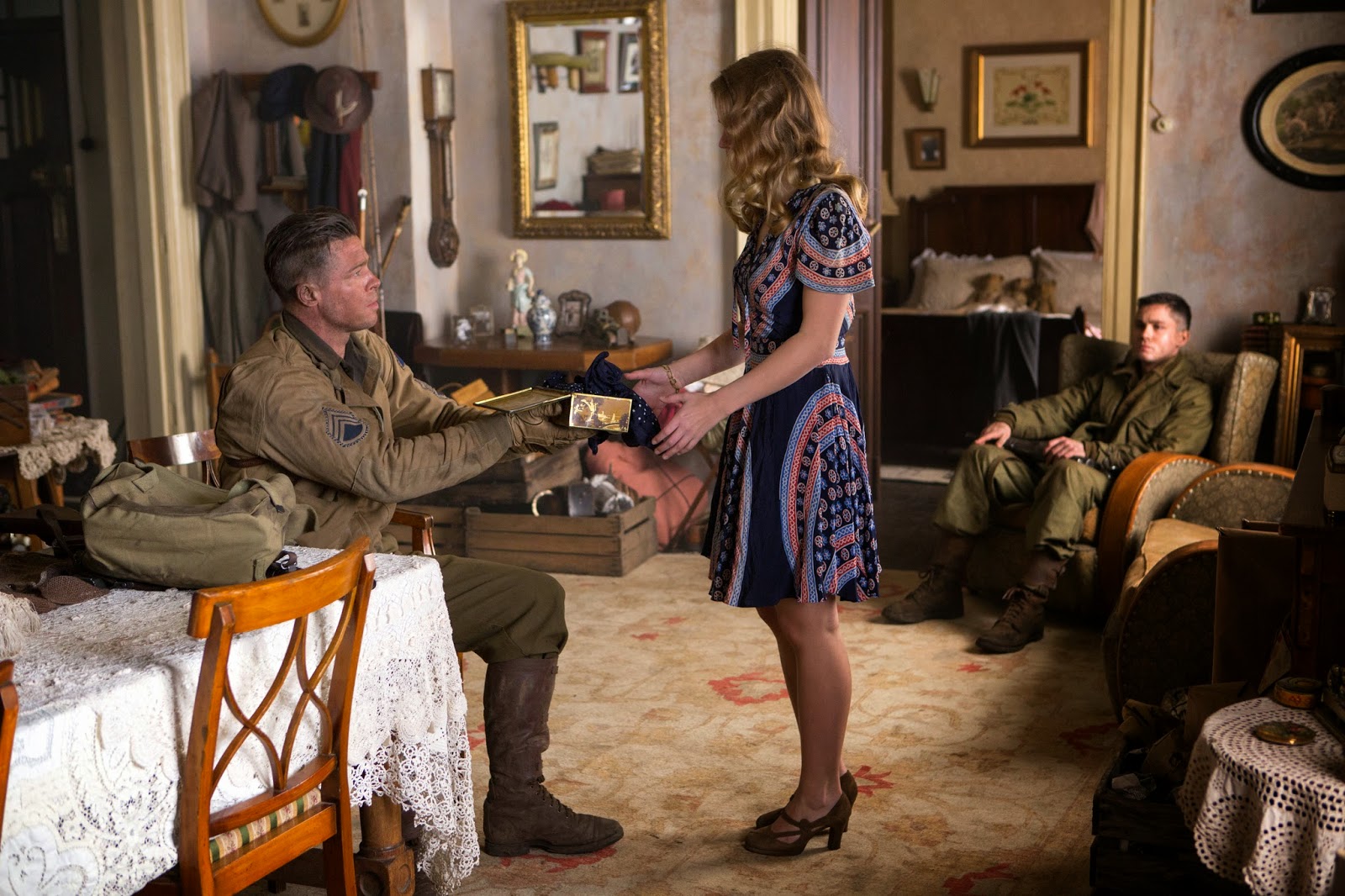Fury (2014)

Review of Fury (2014)
David Ayer’s Fury (2014) is a visceral and uncompromising depiction of World War II, capturing the brutality of war through the lens of a single Sherman tank and its five-man crew. Set in the waning days of the European theater in April 1945, the film presents an unflinching look at the chaos and moral ambiguity of warfare. With its intense performances, gripping action sequences, and unrelenting tension, Fury stands out as a poignant and harrowing war drama.
A Story of Brotherhood and Survival
The narrative centers on a U.S. Army tank crew led by Sergeant Don “Wardaddy” Collier (Brad Pitt). Wardaddy is a battle-hardened leader who commands the respect and loyalty of his crew: Boyd “Bible” Swan (Shia LaBeouf), the devout gunner; Trini “Gordo” Garcia (Michael Peña), the sarcastic driver; and Grady “Coon-Ass” Travis (Jon Bernthal), the coarse but fiercely loyal loader. Their cohesion is tested with the arrival of Norman Ellison (Logan Lerman), a young and inexperienced typist thrust into the role of assistant driver.
The film’s central conflict revolves around Norman’s transformation from a naive and idealistic recruit to a hardened soldier capable of killing. Under Wardaddy’s relentless mentorship, Norman is forced to confront the grim realities of war and the moral compromises it demands. Their evolving relationship forms the emotional core of the story, highlighting themes of loyalty, sacrifice, and the loss of innocence.
Raw and Unrelenting Realism
Fury spares no detail in its portrayal of war’s brutality. The film opens with a chilling sequence in which Wardaddy kills a German soldier with his bare hands, setting the tone for the unflinching violence that follows. The battle scenes are intense and visceral, showcasing the claustrophobic nature of tank warfare. The sound design, cinematography, and special effects combine to create a harrowing sense of realism, immersing viewers in the chaos and terror of combat.
The film’s depiction of the Sherman tank—nicknamed “Fury”—is particularly noteworthy. The tank serves as both a symbol of resilience and a microcosm of the crew’s camaraderie and tension. The cramped interiors and mechanical limitations of the tank emphasize the crew’s vulnerability, even as they work together to overcome insurmountable odds.
Standout Performances
Brad Pitt delivers a commanding performance as Wardaddy, portraying the character’s steely resolve and hidden vulnerability with equal intensity. His portrayal captures the duality of a man hardened by war yet burdened by the weight of his responsibilities. Wardaddy’s fierce dedication to his crew and his determination to survive form the backbone of the film.
Logan Lerman’s Norman provides the audience’s entry point into the story. Lerman’s performance is both vulnerable and compelling, effectively conveying Norman’s internal struggle as he grapples with the horrors of war. The evolution of his character is one of the film’s most powerful arcs.
The supporting cast also shines, with Shia LaBeouf delivering a surprisingly restrained and nuanced performance as Bible, whose faith provides a moral anchor amidst the carnage. Michael Peña and Jon Bernthal bring depth and authenticity to their roles, balancing moments of levity with the harsh realities of their situation.
Themes of Morality and Humanity
Fury delves deeply into the moral ambiguities of war, exploring how violence and survival can strip away humanity. The film challenges traditional notions of heroism, presenting characters who are deeply flawed and morally conflicted. Wardaddy’s harsh methods, including forcing Norman to execute a German prisoner, are juxtaposed with moments of tenderness and vulnerability, revealing the emotional toll of his leadership.
The film also examines the bonds of brotherhood forged in the crucible of war. The crew’s interactions—marked by camaraderie, conflict, and mutual reliance—provide a poignant counterpoint to the dehumanizing violence of their environment. These relationships underscore the film’s central theme: that even in the darkest of circumstances, humanity can endure.
Tense and Gripping Action
The action sequences in Fury are masterfully executed, combining technical precision with emotional stakes. The climactic standoff, in which the crew defends a vital crossroads against an overwhelming force of German soldiers, is a tour de force of tension and choreography. The sequence highlights the crew’s resourcefulness and determination, as well as the devastating costs of their heroism.
The film’s attention to detail extends to its historical accuracy, capturing the harsh realities of World War II combat. The depiction of the Sherman tank’s limitations against the more advanced German Tiger tank adds an additional layer of tension and realism to the battles.
Critiques and Controversies
While Fury has been praised for its realism and emotional depth, it has also faced criticism for its relentless bleakness and graphic violence. Some viewers may find the film’s depiction of war excessively brutal, while others have questioned its portrayal of German soldiers as largely faceless antagonists. Additionally, the pacing occasionally falters, with certain scenes feeling overly drawn out or redundant.
Despite these critiques, the film’s commitment to authenticity and its exploration of complex themes have earned it widespread acclaim. Fury does not shy away from the horrors of war, instead confronting them head-on to deliver a powerful and thought-provoking narrative.
Legacy and Impact
Fury stands as a compelling addition to the war film genre, offering a fresh perspective on the psychological and emotional toll of combat. Its focus on a single tank crew provides an intimate and grounded portrayal of World War II, contrasting with the sweeping scope of other war epics. The film’s blend of action, character development, and moral complexity ensures its place as a memorable and impactful entry in the genre.
Conclusion
Fury is a raw and unflinching exploration of war’s brutality, anchored by exceptional performances and masterful filmmaking. Its portrayal of brotherhood, morality, and sacrifice offers a poignant reflection on the human cost of conflict. While its relentless intensity may not be for everyone, Fury is a gripping and thought-provoking film that leaves a lasting impression. For those seeking a war drama that balances visceral action with emotional depth, Fury is a must-watch.